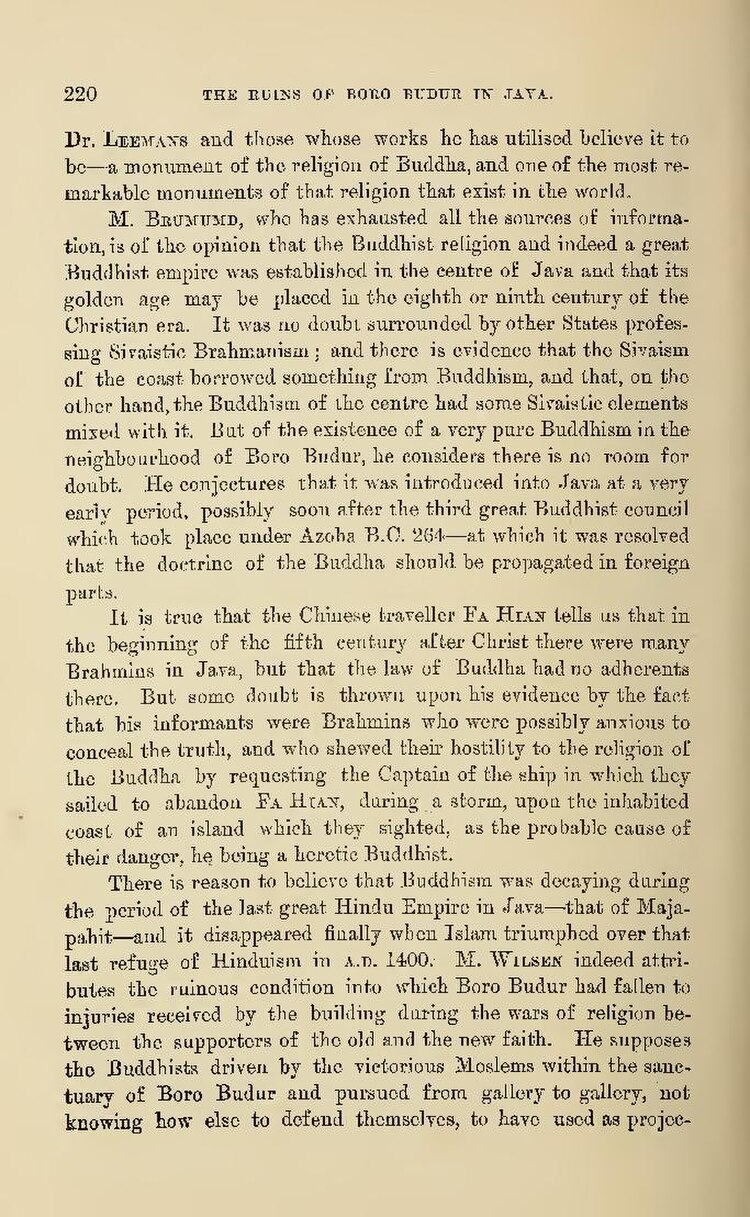Dr. LEEMANS and those whose works he has utilised believe it to be—a monument of the religion of Buddha, and one of the most remarkable monuments of that religion that exist in the world.
M. BRUMUMD, who has exhausted all the sources of information, is of the opinion that the Buddhist religion and indeed a great Buddhist empire was established in the centre of Java and that its golden age may be placed in the eighth or ninth century of the Christian era. It was no doubt surrounded by other States professing Sivaistic Brahmanisan; and there is evidence that the Sivaism of the coast borrowed something from Buddhism, and that, on the other hand, the Buddhism of the centre had some Sivaistic elements mixed with it. But of the existence of a very purce Buddhism in the neighbourhood of Boro Budur, he considers there is no room for doubt. He conjectures that it was introduced into Java at a very early period, possibly soon after the third great Buddhist council which took place under Azoba B.C. 264—at which it was resolved that the doctrine of the Buddha should be propagated in foreign parts.
It is true that the Chinese traveller FA HIAN tells us that in the beginning of the fifth century after Christ there were many Brahmins in Java, but that the law of Buddha had no adherents there. But some doubt is thrown upon his evidence by the fact that his informants were Brahmins who were possibly anxious to conceal the truth, and who shewed their hostility to the religion of the Buddha by requesting the Captain of the ship in which they sailed to abandon FA HIAN, during a storm, upon the inhabited coast of an island which they sighted, as the probable cause of their danger, he being a heretic Buddhist.
There is reason to believe that Buddhism was decaying during the period of the last great Hindu Empire in Java—that of Majapahit—and it disappeared finally when Islam triumphed over that last refuge of Hinduism in A.D. 1400. M. WILSEN indeed attributes the ruinous condition into which Boro Budur had fallen to injuries received by the building during the wars of religion between the supporters of the old and the new faith. He supposes the Buddhists driven by the victorious Moslems within the sanctuary of Boro Budur and pursued from gallery to gallery, not knowing how else to defend themselves, to have used as projec-
